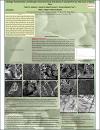Lithologic Characterization and Micropore Structures of Gas Shale Strata: An example from the Midra Shale of Western Qatar
| Author | Sadooni, Fadhil N. |
| Author | Al-Kuwari, Hamad Al-Saad |
| Author | Sakhaee-Pour, Ahmad |
| Author | Matter, Wael S. |
| Author | Gunawan, Indra |
| Available date | 2021-10-18T06:52:14Z |
| Publication Date | 2021 |
| Publication Name | Qatar University Annual Research Forum and Exhibition (QUARFE 2021) |
| Citation | Sadooni F. N., Al-Kuwari H. A., Sakhaee P. A., Matter W. S., Gunawan I., "Lithologic Characterization and Micropore Structures of Gas Shale Strata: An example from the Midra Shale of Western Qatar", Qatar University Annual Research Forum and Exhibition (QUARFE 2021), Doha, 20 October 2021, https://doi.org/10.29117/quarfe.2021.0024 |
| Abstract | Gas shale is the future hydrocarbon reservoir of Qatar. The Qatari geologic section has had important successions of gas shale at different geologic times including the Eocene Midra shale, the Cretaceous Ratawi and Nahr Umr, and the Paleozoic Qusaibah and Unayzah formations. Shale samples were collected from the outcrops of the Midra Shale in Dukhan and Umm Bab areas. Samples were subjected to geochemical analyses using XRD and RXF. Selected samples were examined under SEM and TEM microscopes. All the studied samples contain palygorskite as the main mineral and, in some cases, the only mineral present, as indicated by X-ray diffraction patterns. XRF analysis shows palygorskite range from ideal palygorskite (equal aluminum and magnesium content) to aluminous palygorskite where no magnesium is recorded. The most common other minor minerals are halite, quartz, calcite, and other clay minerals: illite, smectite and sepiolite. The palygorskite chain phyllo silicates results in a fibrous habit with channels running parallel to the fiber length. Images from Transmission Electron Microscopy (TEM) clearly show the presence of bundled lath-like crystals of palygorskite 5 to 20 nm in width and several micrometers in length. The Midra Shale was deposited in a shallow marine shelf that was subjected to clastic influx from the nearby land. Although, the Midra contains many elements that support deposition under marine conditions such as large foraminifera and shark teeth, the presence of fully developed shale horizons indicate a mixed marine-continental depositional setting. Most of the micropores are channels associated with the palygorskite laths as can be seen from the TEM images or some dissolution pores that resulted from halite and gypsum dissolution by meteoric water. |
| Language | en |
| Publisher | Qatar University Press |
| Subject | Gas Shale Qatar Midra |
| Type | Poster |
Files in this item
This item appears in the following Collection(s)
-
Marine Science Cluster [216 items ]
-
Theme 1: Energy and Environment [73 items ]


